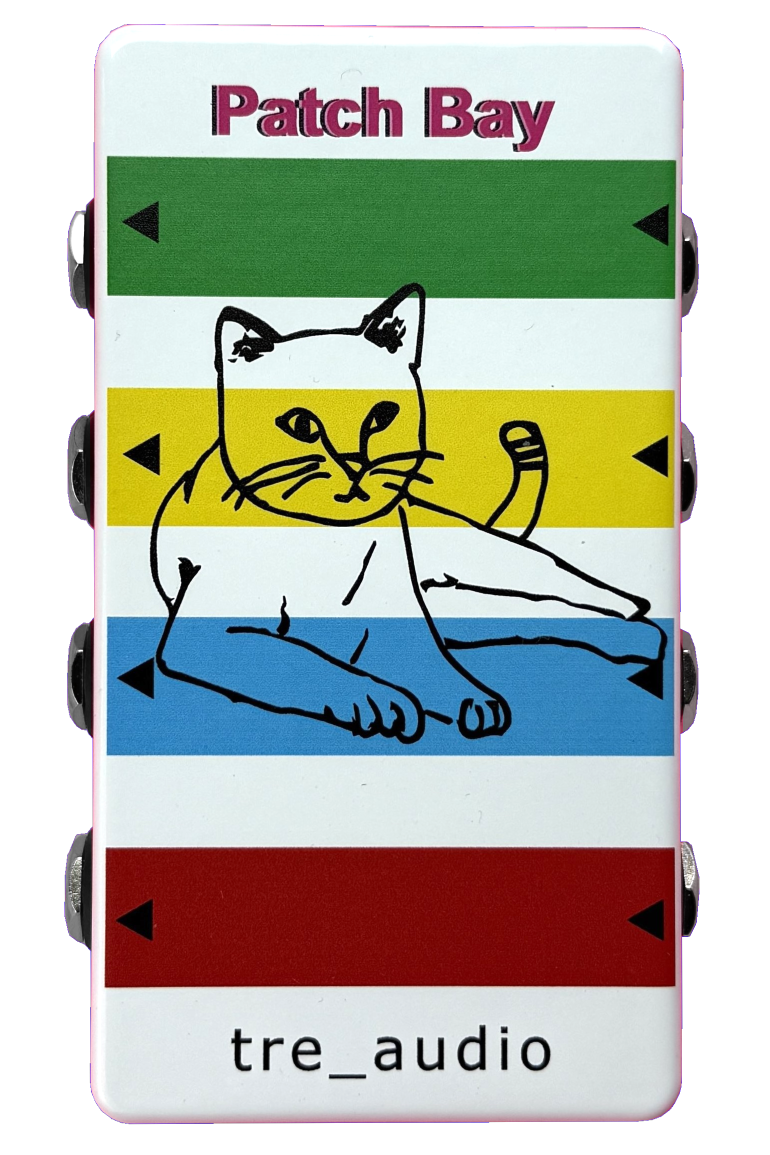Mastering the Four Cable Method (4CM) — and How a Patch Bay Makes It Way Easier
If you’ve spent any time building a pedalboard, you’ve probably heard about the Four Cable Method, or 4CM. It’s one of those “pro rig” tricks that sounds complicated at first, but once you get it dialed in, it completely changes how your effects interact with your amp.
In this post, we’ll break down what the Four Cable Method does, how to set it up, and how using a tre_audio Patch Bay can clean up your board, simplify your connections, and save you time every time you set up or tear down your rig.
What the Four Cable Method Does
Most pedals are designed to go in one of two places in your signal chain:
Before your amp’s input (for things like overdrives, wahs, and compressors)
In your amp’s effects loop (for delay, reverb, chorus — basically time-based effects)
The Four Cable Method lets you do both — placing your drive pedals before the amp’s preamp and your time-based effects after it.
That means your delay or reverb isn’t getting distorted by the amp’s gain — which keeps everything clearer and more defined, especially if you’re running higher-gain tones.
How to Hook It Up
Here’s the basic setup:
Guitar → Input of your pedalboard (tuner, overdrives, etc.)
Output of those pedals → Amp input
Amp FX Send → Pedals that go in the loop (delay, reverb, modulation)
Last FX pedal → Amp FX Return
Four cables — hence the name. Simple in theory, but in practice… it’s a mess of cables running both directions between your board and your amp.
The 4CM Headache
If you’ve ever used 4CM live or in a studio, you know the pain:
Multiple long cables running from your board to your amp
Confusion about which cable goes where
Tangled mess every time you pack up
It’s one of those setups that works great once you’re plugged in, but setting it up takes forever — and mistakes are easy to make.
Clean It Up with a Patch Bay
That’s where a Patch Bay comes in.
Our tre_audio Patch Bay lets you move all those in and out connections to one clean row of jacks right on your pedalboard’s edge. Instead of reaching under your pedals or tracing cables, you just plug into clearly labeled jacks:
Guitar In
To Amp In
FX Send
FX Return
Done. Four cables, easy access, no spaghetti.
When it’s time to pack up after a show, you pull those four cables and go — no digging through your board or worrying about which cable goes to what.
Why It Matters
The Four Cable Method sounds great because it lets your amp and pedals work together properly. But for most players, the cable management alone keeps them from using it regularly.
With a Patch Bay, you get the tone benefits and the simplicity.
You’ll:
Spend less time setting up
Keep your board tidy and reliable
Protect your pedal jacks from constant plugging/unplugging
Be ready to play faster
In Short
The Four Cable Method is one of the best ways to get the most out of your amp and pedals — but it’s even better when it’s practical.
If you’ve ever looked at your rig and thought, “There’s got to be a cleaner way to do this,” — there is.
Try wiring your 4CM setup through a tre_audio Patch Bay.
It keeps things organized, saves setup time, and lets you focus on what actually matters: your tone.

